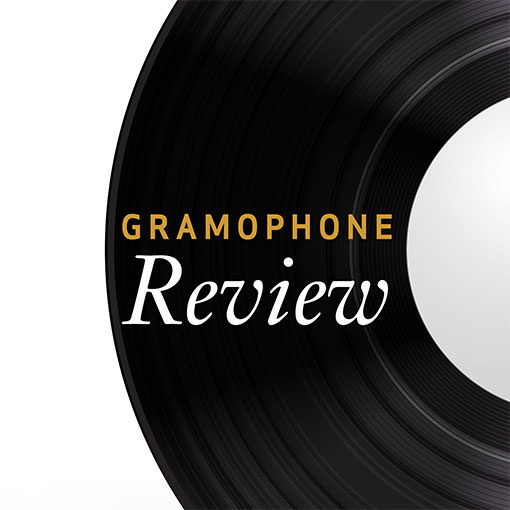Mozart Die Zauberflöte
View record and artist detailsRecord and Artist Details
Label: Music & Arts
Magazine Review Date: 7/1999
Media Format: CD or Download
Media Runtime: 210
Mastering:
ADD
Catalogue Number: CD882

Author: Stanley Sadie
With his 19-CD series of the C. P. E. Bach concertos well under way, the energetic Miklos Spanyi would seem to be embarking on the entire solo keyboard music – this CD is labelled Vol. 3 – which threatens to be a considerably longer project. Let me say first that I am glad he has chosen to execute it, or at least this part of it, on the clavichord. Some of C. P. E. Bach’s music, but not much, was conceived in terms of the harpsichord and a good many of the later pieces work well on the fortepiano; but the intimate, inward, improvisatory character of his genius is far better captured on the smaller instrument, which lends itself to the finest nuance and was of course immensely popular in the Germany of his time. Burney’s famous account of Carl Philipp’s playing on it when he visited Hamburg in the 1770s gives some idea of its special expressive scope and character.
The main part of this CD is taken up with the six early sonatinas, written when he was not yet 20 and was still under his father’s guidance; it would be intriguing to know what JSB thought of these progressive pieces – I am sure he would have approved them, certainly for their skill and probably for their new expressiveness. Later, CPE rearranged them, and in particular switched around the slow movements. In the 1730s, all movements of a piece were commonly in the same key, but a decade later it was usual to have the middle movement in a contrasting one; having chosen the main keys with admirable (if unconscious) foresight, all he had to do was three deft swaps. It may give pause to those who suppose the movements of any work to be organically related. Spanyi, as you would expect, has a keen feeling for the composer’s very personal idiom. He knows how, with minutely judged hesitations, to draw attention to harmonic subtleties (listen to the Andante of the opening D minor Sonata, or the quite intense Adagio of No. 4). He brings neat and pointed timing to some of the quick movements (like the spiky Allegro of No. 3). He plays the embellished repeats with style (as in the finale of No. 2). He catches the improvisatory quality of some of the movements (such as the Andante of No. 5), but can also play with direct, crisp rhythms (as in the finale of No. 6). There are touches of drama (the Andante of No. 1) and even, I think, wit (the finale of No. 3). And in the first movement of the E flat Sonata he shows a grasp of broader structure.
The clavichord is recorded satisfactorily, but unless the volume is kept turned quite low – which correctly represents its volume – the sound is liable to become clattery. There are full and scholarly booklet-notes: altogether a promising enterprise for those partial to this quirky composer.'
The main part of this CD is taken up with the six early sonatinas, written when he was not yet 20 and was still under his father’s guidance; it would be intriguing to know what JSB thought of these progressive pieces – I am sure he would have approved them, certainly for their skill and probably for their new expressiveness. Later, CPE rearranged them, and in particular switched around the slow movements. In the 1730s, all movements of a piece were commonly in the same key, but a decade later it was usual to have the middle movement in a contrasting one; having chosen the main keys with admirable (if unconscious) foresight, all he had to do was three deft swaps. It may give pause to those who suppose the movements of any work to be organically related. Spanyi, as you would expect, has a keen feeling for the composer’s very personal idiom. He knows how, with minutely judged hesitations, to draw attention to harmonic subtleties (listen to the Andante of the opening D minor Sonata, or the quite intense Adagio of No. 4). He brings neat and pointed timing to some of the quick movements (like the spiky Allegro of No. 3). He plays the embellished repeats with style (as in the finale of No. 2). He catches the improvisatory quality of some of the movements (such as the Andante of No. 5), but can also play with direct, crisp rhythms (as in the finale of No. 6). There are touches of drama (the Andante of No. 1) and even, I think, wit (the finale of No. 3). And in the first movement of the E flat Sonata he shows a grasp of broader structure.
The clavichord is recorded satisfactorily, but unless the volume is kept turned quite low – which correctly represents its volume – the sound is liable to become clattery. There are full and scholarly booklet-notes: altogether a promising enterprise for those partial to this quirky composer.'
Discover the world's largest classical music catalogue with Presto Music.

Gramophone Digital Club
- Digital Edition
- Digital Archive
- Reviews Database
- Full website access
From £8.75 / month
Subscribe
Gramophone Full Club
- Print Edition
- Digital Edition
- Digital Archive
- Reviews Database
- Full website access
From £11.00 / month
Subscribe
If you are a library, university or other organisation that would be interested in an institutional subscription to Gramophone please click here for further information.





